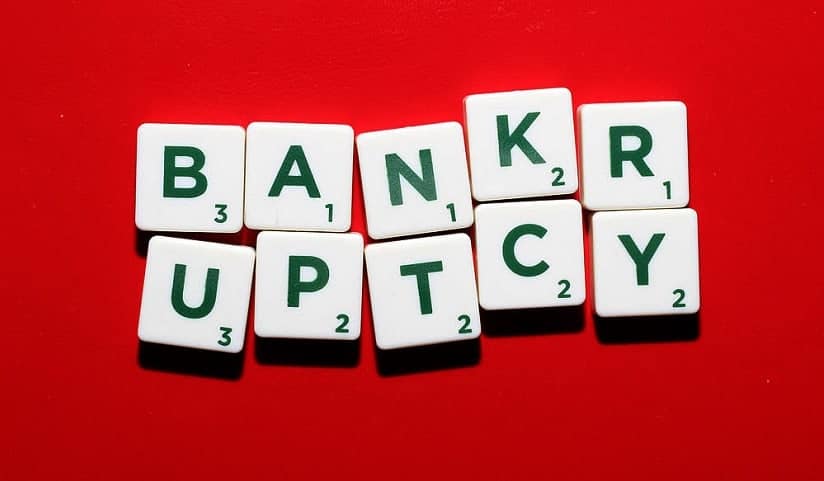Bankruptcy can happen to anyone. Large mortgages, failed business ventures and student loans can soon become overwhelming and difficult to manage. Filing for bankruptcy may seem like a drastic course of action to take, but for many people in financial distress it can be the most realistic and helpful option available. That said, it can still be a difficult decision to make, when faced with the possibility. Often the stigma related to bankruptcy in Ireland can cause individuals to delay on seeking a solution for their debt. However, acting quickly to find a suitable solution to your debt problems is the best way to simplify the process.
If you’ve become overwhelmed by personal debt, it’s important to talk to a professional with extensive experience in the field. When you call the team at Anthony & Joyce Co., our bankruptcy solicitors will offer you the help and advice you need to guide you through the bankruptcy process. We will discuss every option available to you, examine the pros and cons of each course of action, and discuss the matter until you have all the facts you need to make the decision confidently. So, if you’re considering filing for bankruptcy, pick up the phone to talk to our Dublin 8 based solicitors, or, if you’d prefer, read over our extensive bankruptcy guide below.
What is Bankruptcy?
Bankruptcy in Ireland, is the legal process of releasing and distributing assets of a personal debtor to his or her creditors in the event that the debtor is unable or unwilling to pay their debts. Bankruptcy is often the preferred route for individuals unable to repay debts to their creditors to the amount of or greater than €20,000.
Official Assignee in Bankruptcy
The Official Assignee in Bankruptcy, is based in the Insolvency Service Ireland (ISI) and manages its Bankruptcy Division. Once the bankruptcy process has been initiated, ownership of an insolvent person’s property transfers to an Official Assignee in Bankruptcy to be sold by him/her for the benefit of those to whom the individual owes debts (creditors). When the person’s property is sold, the Official Assignee ensures that the proceeds are shared out fairly among creditors and any outstanding debt is written off.
The Legislation
Anthony Joyce & Co. have been longstanding campaigners for the reform of Irish bankruptcy legislation, dating back to 2009. Fortunately, the government has made drastic changes over the last number of years to Irish bankruptcy legislation, making bankruptcy in Ireland a much more viable choice. The Bankruptcy Act 1988, which established the bankruptcy period as 12 years, has since been replaced by the Personal Insolvency Act 2012, which in turn, has been replaced by The Personal Insolvency Act 2015.
The main changes brought in by The Personal Insolvency Act 2015 are as follows:
- Reducing the duration of bankruptcy in Ireland from 3 years (as proposed by the Personal Insolvency Act 2012) to 1 year.
- Returning ownership of the bankrupt person’s home to them after 3 years (subject to any outstanding mortgage) unless it must be sold to pay creditors.
- Reducing the maximum duration of bankruptcy payment orders from 5 years to 3 years, except in cases of non-co-operation or concealment of assets.
- Extending the duration of bankruptcy in cases of non-co-operation or concealment. Streamlining and clarifying the processes of bankruptcy in Ireland.
These changes to Irish bankruptcy legislation have made filing for bankruptcy in Ireland much more attractive. However, bankruptcy may not always be the best option. Debtors are therefore advised to consider all their options before filing for bankruptcy.
Avoiding Bankruptcy
In the past, if you were insolvent – that is, you were unable to pay your debts or meet your liabilities – bankruptcy was the only formal mechanism available for you to settle your debts and get protection from your creditors. However, three new debt resolution mechanisms have been introduced under the Personal Insolvency Act 2012 for people who cannot afford to pay their personal debts. These debt resolution mechanisms are administered by the Insolvency Service of Ireland (ISI) and are outlined below:
-
Debt Relief Notice (DRN)
The Debt Relief Notice (DRN) process provides debt relief for people who have virtually no disposable income or assets and no prospect of being able to pay off the debt in the next 3 years. If a DRN is issued for you, it will allow for the write-off of your qualifying debt up to €35,000 (formerly €20,000) subject to a 3-year supervision period.
During this period your creditors will not be able to pursue you for payment. However, if your circumstances improve during the 3 years, you may have to pay part of your debts accordingly. At the end of the 3 years, all of the debts covered by the DRN will be written off, even if you have not managed to pay anything off them.
-
Debt Settlement Arrangement (DSA)
A Debt Settlement Arrangement (DSA) provides for the agreed settlement of unsecured debt with one or more creditors over a period of 5 years, with a possible agreed extension to 6 years. You may apply for a DSA if the level of your income, assets and debts would make you ineligible for a Debt Relief Notice. You must be able to make some repayments to your creditors in return for a discount of your debts. The DSA is a voluntary arrangement and it will have to get the support of creditors representing at least 65% of your total debt. You must process your application through a Personal Insolvency Practitioner (PIP).
-
Personal Insolvency Arrangement
A Personal Insolvency Arrangement (PIA) provides for the agreed settlement of secured debt up to a limit of €3 million (although this cap may be increased with the consent of all secured creditors) and an unlimited amount of unsecured debt. A PIA will run over a period of 6 years, with a possible agreed extension to 7 years.
The PIA works like a Debt Settlement Arrangement in the following ways:
- You must apply through a Personal Insolvency Practitioner (PIP)
- You must be able to make some repayments to your creditors in return for a discount of your debts
- It is a voluntary arrangement and must get the support of creditors – both secured and unsecured – representing at least 65% of your total debt
In addition, over 50% of your secured creditors and 50% of unsecured creditors must vote in favour. However, the Personal Insolvency Act 2015 now provides for court review where a mortgage lender rejects the borrower’s personal insolvency proposal. When the agreed period ends, and if your PIA has operated successfully, you will be discharged from the unsecured debts that it covered. Secured debt, however, will only be discharged to the extent specified in the PIA.
What Happens When You Claim Bankruptcy?
If none of these options are suitable for your individual debt consolidation needs, then bankruptcy may be your best alternative. However, before you initiate the process, there are a number of considerations to think about.
Things to Consider Before Declaring Bankruptcy in Ireland:
Once you have been declared bankrupt, you will be guilty of an offence if:
- You do not disclose the bankruptcy when getting a loan or any other form of credit of €650 or more
- When trading in a name other than that in which you were made bankrupt, you do not disclose the bankruptcy
- You act as a director, manager, auditor, liquidator or receiver of a company without permission of the court
These offences carry a maximum penalty of 5 years in prison and a fine of €1,270.
Other Consequences of Bankruptcy Are:
- If you wish to travel outside the State, you should tell the Official Assignee. You may be arrested if the High Court believes you are leaving the State in order to avoid the consequences of your bankruptcy.
- You cannot be granted an enduring power of attorney on behalf of someone else. If you hold one already, it is automatically revoked if you become bankrupt.
- Under the Charities Act 2009, you may not be a trustee of a charity if you are adjudicated bankrupt.
- Once declared bankrupt, you cannot act as an auditor, liquidator, receiver, director or manager of a company. Unless you first receive permission from the court.
- Any assets you gain after bankruptcy may still be seized by the court for the benefit of your creditors. For example, if you receive an inheritance or win something of sizeable value.
Declaring Bankruptcy in Ireland
Declaring bankruptcy can be a complicated, drawn out process. That’s why the ISI considers it advisable to get professional legal advice in advance of beginning the bankruptcy process. The steps involved in the process are outlined below.
Personal Insolvency
Before you can apply for Bankruptcy in Ireland you need to show that you have tried the existing personal insolvency structures and found them unsuitable. Either that or you have already had an unsuccessful attempt at being declared bankrupt. What this means is that you will have made application for bankruptcy through the Insolvency Service of Ireland (ISI) with a Personal Insolvency Practitioner (PIP) and failed. You will need written certification by a PIP that you have either failed in a previous personal insolvency attempt or that it is unsuitable for you.
The function of the PIP is to decide whether your financial state of affairs suit personal insolvency. This will involve a meeting and a detailed analysis of your financial circumstances. This will need to be supported by documents on your side.
You will need to have the following to hand at your PIP meeting:
- proof of all income,
- bank statements,
- details of mortgage payments or rental and
- details of all liabilities.
Bankruptcy Application Process
Once you’ve completed this stage you can apply for bankruptcy, through the following process.
- Lodge €200 with the Official Assignee
- Complete your petition, which must be verified by a sworn affidavit and a sworn statement of affairs
- Get the above documents stamped at a court Stamp Office
- File the stamped documents and statement of affairs at the Examiner’s Office and get a court date
- Attend the court hearing on that date, where the judge, if satisfied, will adjudicate you bankrupt
- Meet the Official Assignee or Bankruptcy Inspector to be interviewed about all your assets and debts
- Place a notice of your adjudication as a bankrupt in Iris Oifigiúil (the State gazette)
- Place a notice of your adjudication as a bankrupt either on the ISI’s website or in a national daily newspaper.
The Bankruptcy Register
The Register of Bankruptcies is maintained by the Office of the Examiner of the High Court. You must also advertise your bankruptcy in Iris Oifigiúil and on the Insolvency Service Ireland (ISI) website. This must be done within 21 days of adjudication. The purpose of this notice is to notify creditors of a bankruptcy. It contains information on when a person has been adjudicated bankrupt and their address.
This Register is a record of all bankruptcies, including those that have been discharged. So, even after your period of bankruptcy has finished, your name will remain on the Register. A person searching the Register is told the status of the bankruptcy and the date it was discharged, as appropriate. Once said person’s period of bankruptcy is over, no information is given about the address of the former bankrupt person.
If you, or someone you know, is struggling to repay unsustainable levels of debt, contact us today. Our team of experienced solicitors have the skills necessary to advise you on the best options for your unique circumstances. Don’t suffer alone, we can help.




